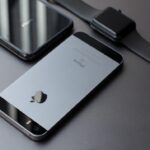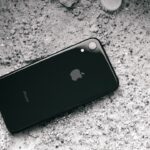An Internet Protocol (IP) address serves as a unique identifier for devices connected to a network, allowing them to communicate with one another. Each device, whether it be a smartphone, computer, or server, is assigned an IP address that can be likened to a home address in the digital world. This address is essential for routing data packets across the internet, ensuring that information sent from one device reaches its intended destination.
IP addresses come in two primary versions: IPv4 and IPv6. IPv4 addresses are composed of four sets of numbers ranging from 0 to 255, separated by periods (e.g., 192.168.1.1), while IPv6 addresses are longer and designed to accommodate the growing number of devices connected to the internet. The significance of an IP address extends beyond mere identification; it also plays a crucial role in determining the geographical location of a device.
This geolocation capability allows websites and services to tailor content based on the user’s location, which can enhance user experience but also raises privacy concerns. For instance, when accessing a streaming service, the content available may vary depending on the user’s IP address, as licensing agreements often restrict access to specific regions. Understanding how IP addresses function is fundamental for anyone looking to manage their online presence, whether for personal use or business purposes.
Key Takeaways
- An IP address is a unique identifier for a device on a network
- On an iPhone, you can change your IP address by using a VPN or manually adjusting network settings
- Using a VPN is a popular and secure method to change your IP address
- Manually changing your IP address on an iPhone may require technical knowledge
- If you encounter issues with changing your IP address, you can troubleshoot by resetting network settings or contacting your internet service provider
Changing IP Address on iPhone
Changing the IP address on an iPhone can be a straightforward process, depending on whether the user is connected to a Wi-Fi network or using cellular data. When connected to Wi-Fi, the iPhone typically receives an IP address automatically from the router through DHCP (Dynamic Host Configuration Protocol). However, users may wish to change their IP address for various reasons, such as enhancing privacy or troubleshooting connectivity issues.
To change the IP address on an iPhone while connected to Wi-Fi, users can navigate to the Settings app, select Wi-Fi, and then tap on the information icon (i) next to the connected network. From there, they can choose to configure the IP settings manually. For those who prefer a more dynamic approach, simply disconnecting from the Wi-Fi network and reconnecting can often result in a new IP address being assigned by the router.
This method is particularly useful in situations where users suspect that their current IP address may be causing connectivity problems or if they want to refresh their connection to the network. Additionally, if the router has been configured to assign IP addresses dynamically, users may find that their device receives a different address each time they connect.
Using a VPN to Change IP Address

A Virtual Private Network (VPN) is one of the most effective tools for changing an IP address while also enhancing online security and privacy. When a user connects to a VPN, their internet traffic is routed through a secure server operated by the VPN provider. This process masks the user’s original IP address and replaces it with one from the VPN server, effectively making it appear as though they are browsing from a different location.
This capability is particularly beneficial for individuals who wish to access geo-restricted content or maintain anonymity while online. Moreover, using a VPN provides an additional layer of encryption for data transmitted over the internet. This is especially important when using public Wi-Fi networks, which are often vulnerable to cyberattacks.
By encrypting data, a VPN protects sensitive information such as passwords and personal details from potential interception by malicious actors. Many reputable VPN services offer user-friendly applications for iPhones, allowing users to easily switch between different server locations and enjoy a seamless browsing experience without compromising security.
Manually Changing IP Address on iPhone
| Step | Description |
|---|---|
| 1 | Open the Settings app on your iPhone |
| 2 | Tap on Wi-Fi |
| 3 | Find and tap on the Wi-Fi network you are connected to |
| 4 | Tap on the “Renew Lease” option |
| 5 | Tap on the “Static” tab |
| 6 | Enter the new IP address, subnet mask, router, and DNS information |
| 7 | Tap on “Save” to apply the changes |
For users who prefer more control over their network settings, manually changing the IP address on an iPhone can be accomplished through the device’s settings. This method is particularly useful for those who need to assign a static IP address for specific applications or devices within their local network. To manually set an IP address, users should go to Settings, select Wi-Fi, and tap on the information icon next to their connected network.
From there, they can choose “Configure IP” and switch from “Automatic” to “Manual.” Once in manual mode, users can enter their desired IP address along with the subnet mask and router information. It is crucial to ensure that the chosen IP address does not conflict with other devices on the same network; typically, this means selecting an address outside of the DHCP range set by the router. For example, if the router assigns addresses from 192.168.1.2 to 192.168.1.100, users might choose an address like 192.168.1.200 for their iPhone.
After entering this information, users should save their settings and reconnect to the network for changes to take effect.
Resetting Network Settings on iPhone
If users encounter persistent issues with their IP address or overall connectivity on their iPhone, resetting network settings can often resolve these problems. This process restores all network-related configurations back to their factory defaults without affecting personal data such as photos or apps. To reset network settings, users should navigate to Settings, select General, scroll down to Transfer or Reset iPhone, and then choose Reset Network Settings.
Upon initiating this reset, users will be prompted to enter their device passcode before confirming their decision. After the reset is complete, all saved Wi-Fi networks and passwords will be erased, along with any custom DNS settings or VPN configurations. Users will need to reconnect to their Wi-Fi networks and re-enter passwords as necessary.
While this may seem inconvenient, resetting network settings can effectively clear up any misconfigurations that may be causing issues with obtaining or changing an IP address.
Contacting Internet Service Provider for IP Address Change

In some cases, users may find that they need assistance from their Internet Service Provider (ISP) to change their public IP address. ISPs typically assign dynamic IP addresses that can change periodically; however, there are instances where users may want or need a new one sooner than expected—such as when dealing with security concerns or persistent connectivity issues linked to their current address. Contacting the ISP directly can provide clarity on whether a new IP address can be assigned and what steps need to be taken.
When reaching out to an ISP for assistance with changing an IP address, it is helpful for users to have relevant account information readily available. This may include account numbers or passwords associated with their service plan. ISPs may have specific protocols in place for changing IP addresses; some may require users to disconnect their modem for a certain period or even perform a full reset of their equipment before issuing a new address.
Understanding these requirements can streamline the process and help users achieve their desired outcome more efficiently.
Using a Proxy Server to Change IP Address
Another method for changing an IP address involves using a proxy server. A proxy server acts as an intermediary between a user’s device and the internet, routing requests through its own server before reaching the final destination. This process masks the user’s original IP address and replaces it with that of the proxy server, allowing users to browse anonymously or access content restricted by geographical location.
There are various types of proxy servers available—some are free while others require a subscription fee for enhanced features and security measures. Free proxies may be less reliable and could expose users to potential risks such as data interception or malware infections. Conversely, paid proxy services often provide better performance and security features such as encryption and faster connection speeds.
Users looking for a reliable way to change their IP address while maintaining privacy should carefully evaluate different proxy options based on their specific needs.
Troubleshooting IP Address Change Issues
Despite following proper procedures for changing an IP address on an iPhone or utilizing tools like VPNs and proxies, users may still encounter issues that prevent successful changes from taking effect. Common problems include failure to connect to Wi-Fi networks after manual configuration or persistent use of an old IP address despite attempts at refreshing it. In such cases, troubleshooting steps can help identify and resolve underlying issues.
One effective troubleshooting method involves restarting both the iPhone and the router. Power cycling these devices can clear temporary glitches that may be affecting connectivity or IP assignment processes. Additionally, checking for software updates on the iPhone can ensure that any bugs related to network settings are addressed promptly.
If problems persist after these steps, users may consider consulting online forums or support resources specific to their ISP or device manufacturer for further assistance in diagnosing and resolving issues related to changing an IP address effectively.
If you’re looking to change your iPhone’s IP address, you may also be interested in learning more about how to contact iPhone support for assistance. Check out this article for more information on how to get in touch with Apple’s customer service team. Additionally, you can visit this page to learn more about the history and mission of the iPhone Info website.
FAQs
What is an iPhone IP address?
An iPhone IP address is a unique numerical label assigned to each device connected to a network, which allows it to communicate with other devices and access the internet.
Why would I need to change my iPhone IP address?
There are several reasons why you might need to change your iPhone IP address, such as troubleshooting network connectivity issues, accessing region-restricted content, or improving privacy and security.
How can I change my iPhone IP address?
You can change your iPhone IP address by disconnecting and reconnecting to your Wi-Fi network, using a virtual private network (VPN) app, or contacting your internet service provider for a new IP address.
Are there any risks associated with changing my iPhone IP address?
Changing your iPhone IP address can potentially impact your network connectivity and may result in temporary loss of internet access. Additionally, using a VPN to change your IP address may introduce security and privacy risks if the VPN service is not reputable.
Can I change my iPhone IP address to access region-restricted content?
Yes, using a VPN to change your iPhone IP address can allow you to access region-restricted content by making it appear as though you are connecting from a different location. However, it’s important to note that accessing region-restricted content may violate the terms of service of certain websites or streaming platforms.










